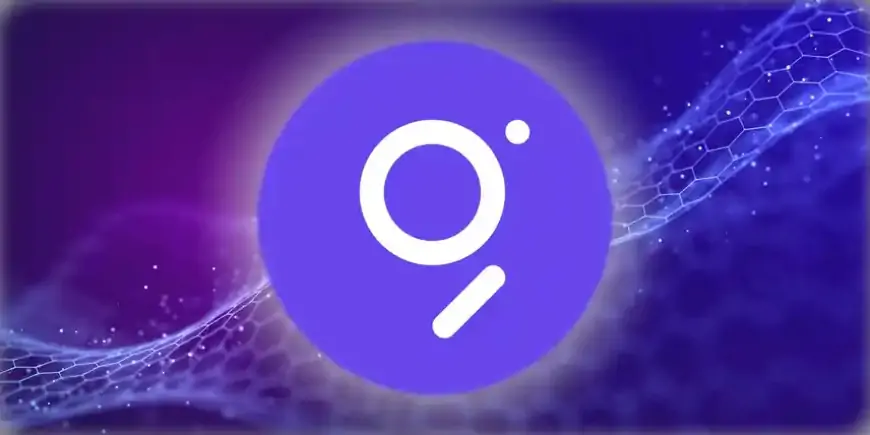What is the Graph (GRT) crypto and how does it work? The complete guide 2024
Discover the Graph (GRT) cryptocurrency: its features and benefits.

What is the Graph?
The Graph serves as a decentralized, open-source protocol for indexing and querying blockchain data, allowing users to gather, store, and analyze information from Ethereum (ETH) and various other blockchain networks. It operates akin to a blockchain ecosystem's Google, empowering developers to construct decentralized applications (dapps) leveraging precise data from blockchains and smart contracts. Additionally, it facilitates consumers' search for blockchain data, enhancing accessibility and reliability.
Accessing multiple chains
Initially introduced on the Ethereum blockchain, The Graph's infrastructure has the capacity to index and retrieve data from various other blockchain networks.
Utilization in DeFi data
The protocol serves multiple purposes, notably within decentralized finance (DeFi), a realm of community-powered financial applications on public blockchains accessible via self-custody wallets. The Graph significantly enhances DeFi data accessibility.
Moreover, The Graph can analyze non-fungible token (NFT) data utilized in NFT marketplaces and associated applications.
How does the Graph work?
The Graph utilizes open-source application programming interfaces (APIs) known as subgraphs. These APIs act as indexes that organize and extract data from a blockchain graph according to user inquiries. The network has the capacity to handle billions of queries monthly.
Any decentralized application (dapp) can submit queries through GraphQL, a widely used language initially created by Facebook (now Meta) for gathering data for users' news feeds.
Developers and participants in the ecosystem can employ GRT, the native token, to support the establishment and utilization of a subgraph.
The Graph ecosystem
The Graph network comprises various essential participants, each undertaking distinct roles:
- Indexers: These are node operators responsible for furnishing indexing and querying services for designated subgraphs. They must stake GRT and receive rewards for contributing to the network. However, providing inaccurate data or faulty indexing may lead to a slash of staked GRT.
- Curators: These individuals, including subgraph developers and consumers, evaluate the quality of specific subgraphs eligible for indexing by The Graph. They can signal subgraphs to Indexers by attaching GRT, receiving shares and royalties in return.
- Delegators: They stake GRT by delegating to one or multiple Indexers without needing to operate a node. Rewards are then distributed between Indexers and Delegators.
Additionally, the network accommodates fishermen, tasked with verifying the correctness of query responses, and arbitrators, responsible for detecting any malicious behavior by Indexers.
The Graph and AI
In 2023, The Graph unveiled its most significant upgrade plans since inception. Among the advancements outlined in the "New Era" roadmap is the incorporation of artificial intelligence-driven (AI) querying. Other enhancements focus on improving indexing efficiency and speed, broadening support for additional languages and blockchain networks, and scaling GRT operations through the adoption of Arbitrum, a layer 2 solution for Ethereum.
How to use the Graph?
Developers have the option to develop and oversee subgraphs via Subgraph Studio, whereas consumers can access blockchain data via Graph Explorer.
To query on-chain data using The Graph:
- Launch the Graph Explorer to engage with the platform, showcasing numerous subgraphs.
- Choose a specific subgraph for querying and click on it.
- Specify your query and utilize the Graph Node to execute the query on the selected subgraph.
Advantages of the Graph
The Graph stands out in the blockchain industry due to the following advantages:
- Advancing a decentralized future: The Graph facilitates access to precise and reliable data without dependence on centralized entities, fostering the expansion of dapps, including Web3 DeFi applications.
- Decentralized governance: Operated by a decentralized autonomous organization (DAO), The Graph embodies a community-driven ecosystem.
- Flexibility and ease for dapp developers: Developers benefit from The Graph's flexibility to utilize existing subgraphs or create customized ones according to their requirements. This eliminates the necessity for building proprietary query services or relying on external data sources.
GRT serves as The Graph's utility token and functions as the primary means of payment within the platform's ecosystem. Market participants such as indexers, delegators, and curators earn rewards in GRT, and token holders have the opportunity to engage in the governance process.
The market value of The Graph token stands at $1.6 billion, consistently ranking among the top 50 largest cryptocurrencies by USD market capitalization. It has experienced a decline of around 70% from its peak valuation of $5.7 billion in November 2021.
Since the start of 2023, The Graph's price has tripled, surpassing the bullish performance of Bitcoin (BTC).
The circulating supply of GRT amounts to 9.3 billion tokens, while the total supply reaches 10.7 billion tokens. The token aims for an inflation rate target of approximately 3% annually, with new GRT tokens allocated to indexers.












































